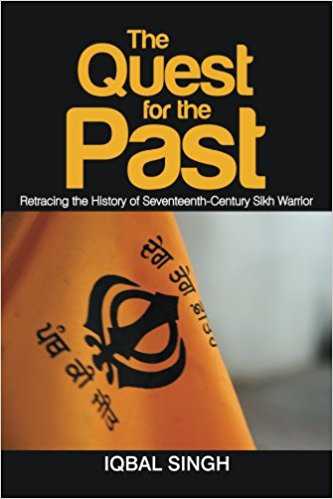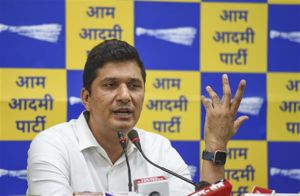
The Quest for the Past: Retracing the History of Seventeenth-Century Sikh Warrior by Iqbal Singh. Xlibris Us. Pages 210. Rs 1,499
Lt-Gen H S Panag (retd)
At the onset, the author makes it clear that this is not a traditional historical account, but the history of his family — the Ramgarhia Misl of which he is the ninth descendent. But then, if the family history is intrinsically linked to the history of the Sikhs for 150 years — from the birth of the Khalsa to the establishment of the Sikh empire and its eventual decline — the cocktail is worth savouring.
The Ramgarhias were part of almost every event in the Sikh history from the late 17th century to early 19th century and played a pivotal role in rise of the Sikh power. The book covers eight generations of the Ramgarhia Misl, in general, and first five generations that fought for establishment and sustainment of the first Sikh empire, in particular. In doing so, the author covers all major military and political events of the history of Punjab. The sketches of the famous personalities that shaped the history are worthy of note. The book is based on the original family papers and thorough research by the author to put in historical context the story of his family.
The patriarch of the family was Bhai Hardas Singh who was initiated into the Khalsa Panth by Guru Gobind Singh himself. He was a scholar warrior who was also the Hazuri Likhari (official scribe ) in the guru’s darbar. He participated in every battle fought by the guru and later by Banda Singh Bahadur and eventually became a martyr at Gurdas Nangal in 1716. His son, Bhagwan Singh, was another scholar warrior who, as a young man, fought alongside his father under Banda Bahadur. Known as Giani (learned) Bhagwan Singh, post the debacle of 1716, he preached about Sikh faith initiating large numbers into the fold.
He was employed by the mercurial Mughal governor of the Jullundur Doab, Adina Beg, the great survivor, who at different times fought and allied with all major players in Punjab. Bhagwan Singh died fighting against Nadir Shah in 1739 but saved the life of Zakariya Khan, the governor of Lahore, in the battle. As a reward, his five sons were awarded a village each as a jagir.
This was the beginning of the Ramgarhia Misl. Later, all five brothers joined the army of Adina Beg. This was the period when the hardcore followers of Banda Bahadur waged guerrilla warfare from the Shivalik hills. Many others simply survived by temporarily seeking employment with Mughal warlords and later went back to fighting for the cause.
Jassa Singh, the eldest son of Bhagwan Sigh, proved his mettle as a soldier and an administrator under Adina Beg. He was part of the siege laid by Mir Mannu, the governor of Lahore, and Adina Beg, of the mud fort of Ram Rauni in 1948 where the Sikhs had taken shelter. On being chided by the Sikhs, he switched sides and fought bravely as a defender, escaping in the nick of time. Jassa soon formed his own guerrilla band, which, by 1760, came to be known as the Ramgarhia Misl named after the Ramgarh Fort built by him at the site of the mud fort of Ram Rauni. In its heydays, the Misl dominated a large tract of Bari Doab, north of Amritsar right upto Kangra and part of Bist Doab around Urmur Tanda-Dasuya.
Despite being a leading and dominant member of Dal Khalsa, internecine war among the Misls led to Jassa Singh’s defeat in 1780. He then became a marauding soldier based in Hisar and Sirsa, raiding Delhi and areas up to 100 km all around for next five years in conjunction with other Misls.
He won back his Misl’s territory in 1785. After battling Ranjit Singh for supremacy, he eventually allied with him to lay the foundation of the Sikh Empire. He was one of the three chosen Misl leaders who were made responsible for the safety of the Darbar Sahib. He constructed the famous Ramgarhia Bunga as his family mansion. He died at the age of 83, acknowledge by all as a hero of the Sikh qaum. His son, Jodh Singh, also assisted Ranjit Singh in expansion of the Sikh Empire, but after his death the Misl like all others were absorbed in the empire in 1716, leaving the heirs with their personal estates and pension.
The family continued to excel under Ranjit Singh and the British, and remained associated with the management of the Golden Temple and were living in the historic Ramgarhia Bunga upto 1972.
The book is a welcome addition to the repository of Sikh history. Chronology of the complex historical events and maps/sketches will make the second edition even better.



























